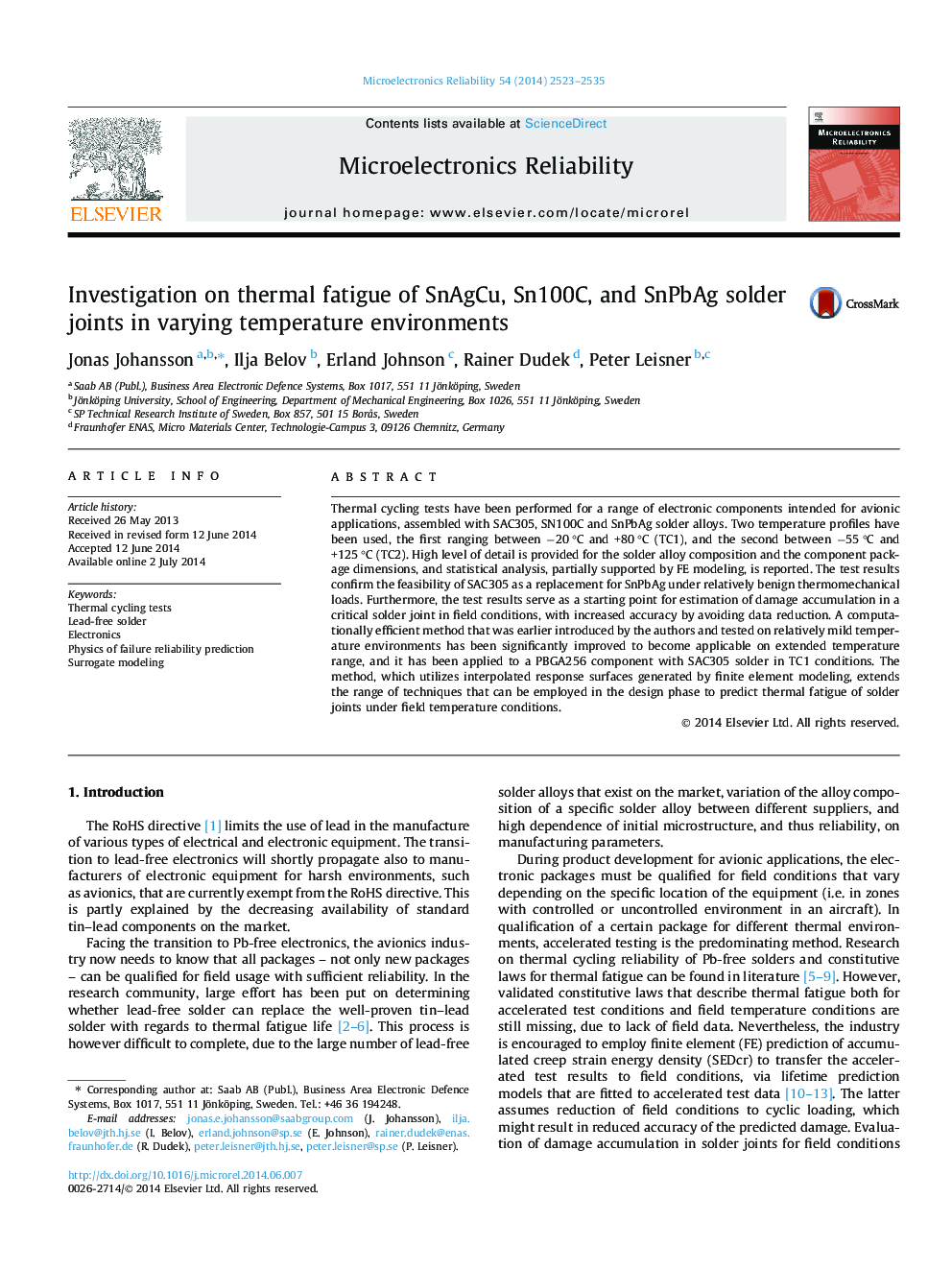| Article ID | Journal | Published Year | Pages | File Type |
|---|---|---|---|---|
| 546804 | Microelectronics Reliability | 2014 | 13 Pages |
•Results and analysis of two thermal cycling tests (−20 °C/+80 °C and −55 °C/+125 °C).•Detailed information on solder alloy composition and dimensions of tested packages.•SAC305, Sn100C, and SnPbAg solder alloys are tested.•Tests confirm the feasibility of SAC305 in applications with moderate loadings.•Improvements of a computational method for damage estimation in solder joints.
Thermal cycling tests have been performed for a range of electronic components intended for avionic applications, assembled with SAC305, SN100C and SnPbAg solder alloys. Two temperature profiles have been used, the first ranging between −20 °C and +80 °C (TC1), and the second between −55 °C and +125 °C (TC2). High level of detail is provided for the solder alloy composition and the component package dimensions, and statistical analysis, partially supported by FE modeling, is reported. The test results confirm the feasibility of SAC305 as a replacement for SnPbAg under relatively benign thermomechanical loads. Furthermore, the test results serve as a starting point for estimation of damage accumulation in a critical solder joint in field conditions, with increased accuracy by avoiding data reduction. A computationally efficient method that was earlier introduced by the authors and tested on relatively mild temperature environments has been significantly improved to become applicable on extended temperature range, and it has been applied to a PBGA256 component with SAC305 solder in TC1 conditions. The method, which utilizes interpolated response surfaces generated by finite element modeling, extends the range of techniques that can be employed in the design phase to predict thermal fatigue of solder joints under field temperature conditions.
